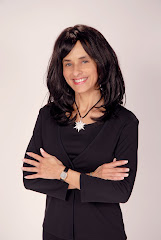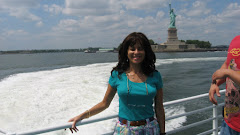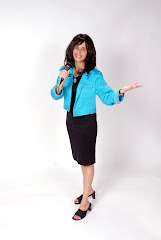
My non-denominational church, Unity On The Bay, where EVERYONE is welcome, is conducting a ten-day marathon of activities, films, lectures, discussions, book studies, music, prayer, meditation, and other activities to help us embody peace. Our minister informed us today that the Peace Sign turned 50 this year. He shared the story of its origin meaning "surrender".
The following is an excerpt from "A history of the Campaign for Nuclear Disarmament (CND) (CND) logo" by the CND in UK.
One of the most widely known symbols in the world, in Britain it is recognised as standing for nuclear disarmament - and in particular as the logo of the Campaign for Nuclear Disarmament (CND). In the United States and much of the rest of the world it is known more broadly as the peace symbol.
It was designed in 1958 by Gerald Holtom, a professional designer and artist and a graduate of the Royal College of Arts. He showed his preliminary sketches to a small group of people in the Peace News office in North London and to the Direct Action Committee Against Nuclear War, one of several smaller organisations that came together to set up CND. The Direct Action Committee had already planned what was to be the first major anti-nuclear march, from London to Aldermaston, where British nuclear weapons were and still are manufactured. It was on that march, over the 1958 Easter weekend that the symbol first appeared in public.
What does it mean? Gerald Holtom, a conscientious objector who had worked on a farm in Norfolk during the Second World War, explained that the symbol incorporated the semaphore letters N(uclear) and D(isarmament).
He later wrote to Hugh Brock, editor of Peace News, explaining the genesis of his idea in greater, more personal depth:I was in despair. Deep despair. I drew myself: the representative of an individual in despair, with hands palm outstretched outwards and downwards in the manner of Goya's peasant before the firing squad. I formalised the drawing into a line and put a circle round it.
The symbol almost at once crossed the Atlantic. Bayard Rustin, a close associate of Martin Luther King had come over from the US in order to take part in that first Aldermaston March. He took the symbol back to the United States where it was used on civil rights marches. Later it appeared on anti-Vietnam War demonstrations and was even seen daubed in protest on their helmets by American GIs.
Simpler to draw than the Picasso peace dove, it became known, first in the US and then round the world as the peace symbol. It appeared on the walls of Prague when the Soviet tanks invaded in 1968, on the Berlin Wall, in Sarajevo and Belgrade, on the graves of the victims of military dictators from the Greek Colonels to the Argentinian junta, and most recently in East Timor Although specifically designed for the anti-nuclear movement it has quite deliberately never been copyrighted. No one has to pay or to seek permission before they use it. A symbol of freedom, it is free for all.
One of the most widely known symbols in the world, in Britain it is recognised as standing for nuclear disarmament - and in particular as the logo of the Campaign for Nuclear Disarmament (CND). In the United States and much of the rest of the world it is known more broadly as the peace symbol.
It was designed in 1958 by Gerald Holtom, a professional designer and artist and a graduate of the Royal College of Arts. He showed his preliminary sketches to a small group of people in the Peace News office in North London and to the Direct Action Committee Against Nuclear War, one of several smaller organisations that came together to set up CND. The Direct Action Committee had already planned what was to be the first major anti-nuclear march, from London to Aldermaston, where British nuclear weapons were and still are manufactured. It was on that march, over the 1958 Easter weekend that the symbol first appeared in public.
What does it mean? Gerald Holtom, a conscientious objector who had worked on a farm in Norfolk during the Second World War, explained that the symbol incorporated the semaphore letters N(uclear) and D(isarmament).
He later wrote to Hugh Brock, editor of Peace News, explaining the genesis of his idea in greater, more personal depth:I was in despair. Deep despair. I drew myself: the representative of an individual in despair, with hands palm outstretched outwards and downwards in the manner of Goya's peasant before the firing squad. I formalised the drawing into a line and put a circle round it.
The symbol almost at once crossed the Atlantic. Bayard Rustin, a close associate of Martin Luther King had come over from the US in order to take part in that first Aldermaston March. He took the symbol back to the United States where it was used on civil rights marches. Later it appeared on anti-Vietnam War demonstrations and was even seen daubed in protest on their helmets by American GIs.
Simpler to draw than the Picasso peace dove, it became known, first in the US and then round the world as the peace symbol. It appeared on the walls of Prague when the Soviet tanks invaded in 1968, on the Berlin Wall, in Sarajevo and Belgrade, on the graves of the victims of military dictators from the Greek Colonels to the Argentinian junta, and most recently in East Timor Although specifically designed for the anti-nuclear movement it has quite deliberately never been copyrighted. No one has to pay or to seek permission before they use it. A symbol of freedom, it is free for all.
addition:
Here is an article posted in The New Times
Peace Out
Just give it a chance at Unity on the Bay’s Peace-a-thon.
BY PATRICE ELIZABETH GRELL YURSIK
Christian or Muslim, Jew or Hindu, agnostic or atheist — we can all agree on one thing: This world is in need of a whole lot less war and a whole lot more peace. Although world peace might seem like a tall order to anyone with an IQ higher than your average pageant queen’s, there are folks actively working toward that lofty goal. But for every aid worker toiling in a refugee camp, or public official trying to bridge communication between rival factions, there’s a government waiting to invade another country for bull____ reasons, or a fundamentalist ready to blow harmony to smithereens. Why can’t the world just do what John Lennon asked, and give peace a chance? If you want to try, head to Unity on the Bay (411 NE 21st St., Miami).
Its Peace-a-Thon aims to use the power of collective hope to target a specific problem. The church is of Christian denomination, but its message carries beyond religious boundaries. Because September 11 is the Unity World Day of Prayer, and September 21 is the United Nations International Day of Peace, Unity on the Bay plans to embrace global unity and spiritual diversity for the 11 days in between.
Celebrations will include a concert with Deva Premal & Miten this Sunday — tickets for which cost $25 general admission in advance, $35 at the door. There’ll be a consciousness day-spa this Saturday that includes meditation, workshops, labyrinth walks, massages, Reiki, and Johrei. And this Friday, from 9 a.m. to 4:30 p.m., like-minded individuals are simply welcome to come to the Return to Self Silent Retreat. There’s a “suggested love offering” of $30, and pre-registration is required. Visit www.unityonthebay.org or www.peace-a-thon.com.






.jpg)
.jpg)




No comments:
Post a Comment